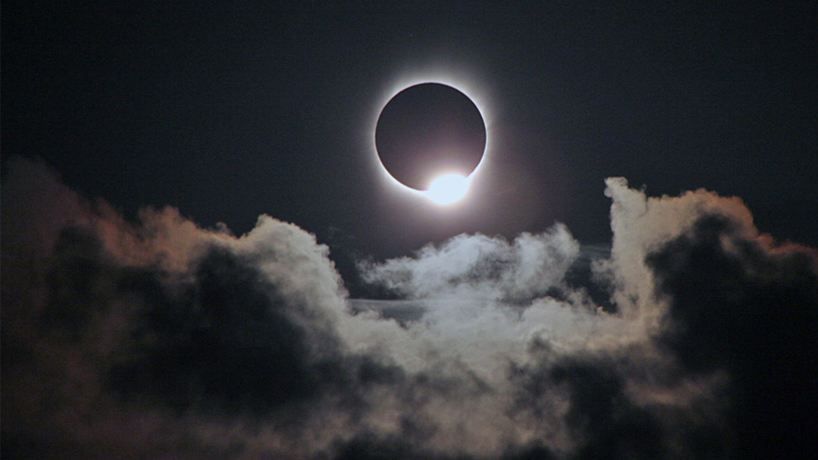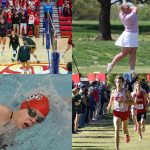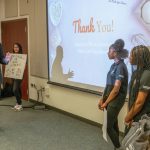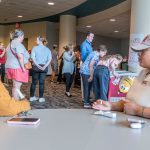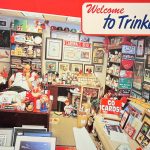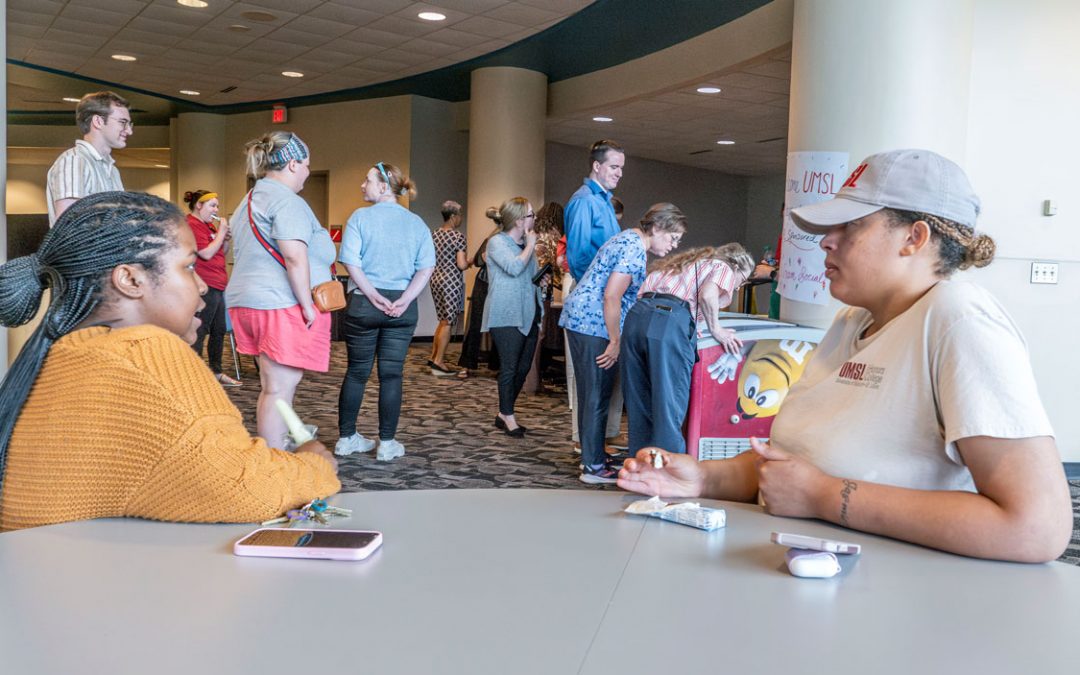Are you ready for the Aug. 21 total solar eclipse?
Maybe you’ve made viewing plans. You might even have purchased your eclipse glasses. But do you have your eclipse basics down? And besides looking up to the sky, do you know what else to look for and what to expect on the ground?
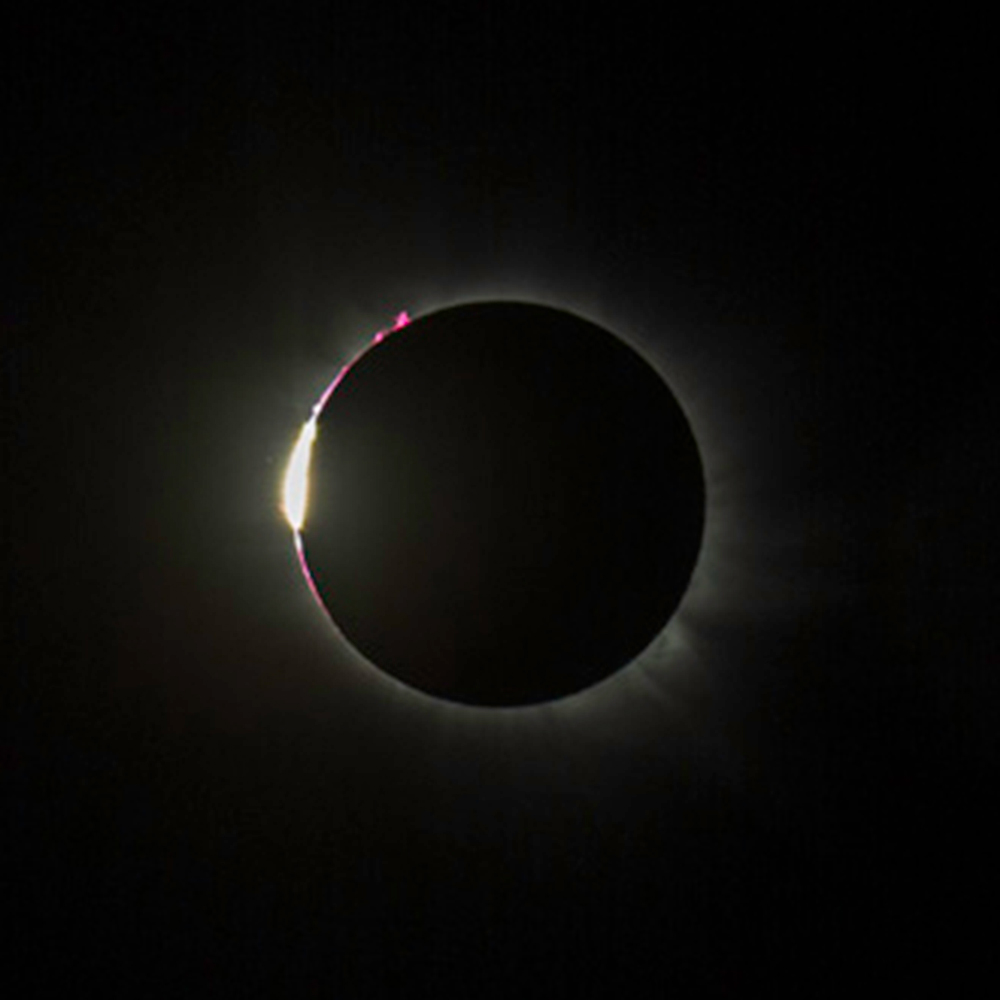
Baily’s Beads are one of the sights astronomy Professor Bruce Wilking suggests you observe. The moon’s lunar valleys allow “beads” of sunlight to shine through its uneven surface. (Photo by Reinhold Wittich)
Bruce Wilking, a professor of astronomy at the University of Missouri–St. Louis, is here to fill you in as he answers UMSL Daily’s solar eclipse questions.
Learn more before the campus viewing event Monday at 12:30 p.m. on the Millennium Student Center patio. Just outside the path of totality, UMSL’s campus will see 99.93 percent of the sun obscured by the moon.
What are the logistics of a total solar eclipse?
A total solar eclipse occurs when the moon completely blocks the sun, and the moon’s shadow reaches the Earth. It is an accident of nature that the moon and sun have the same angular size in the sky. The sun is 400 times larger but 400 times farther away than the moon. Of the three types of solar eclipses, it is considered the most spectacular.
Why is this eclipse so special?
The alignment for an eclipse only occurs once or twice a year. Also, the moon’s shadow is only a few hundred miles wide, and it passes over only a select part of the Earth’s oceans or continents.
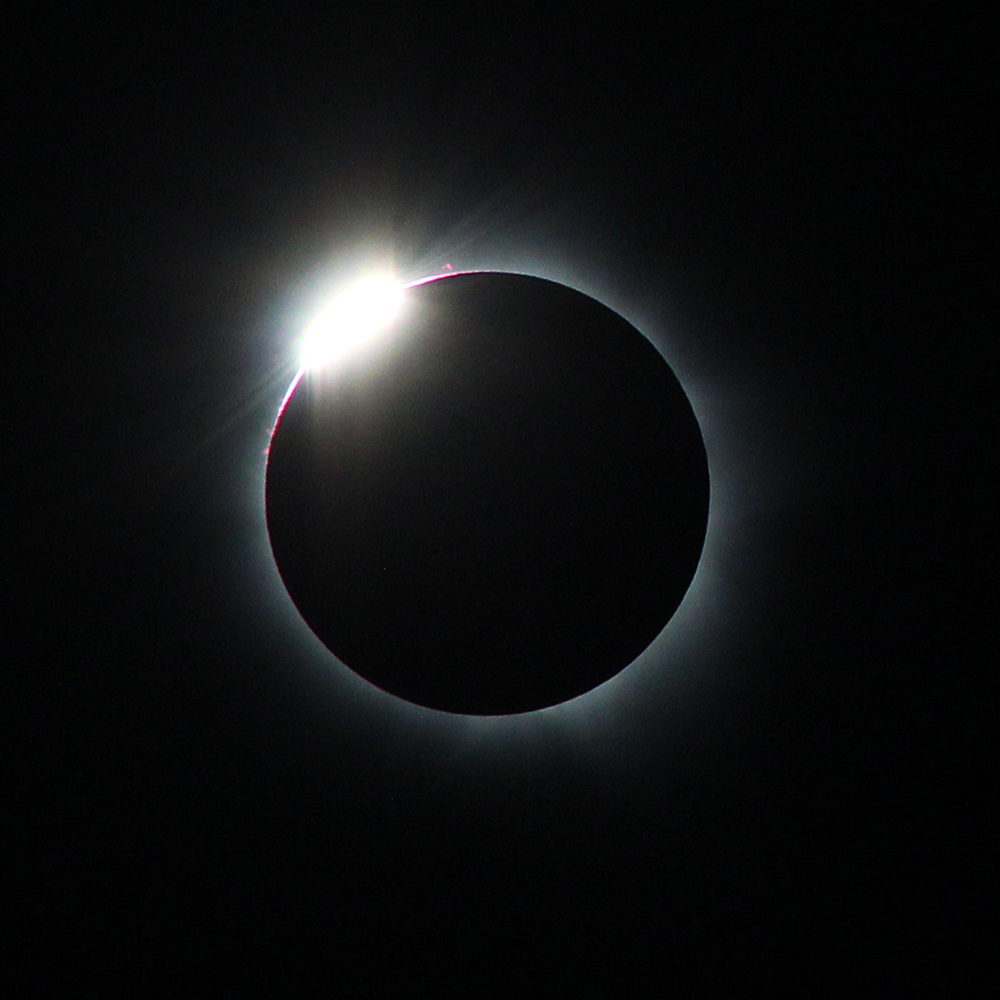
The diamond ring effect occurs when the opposing horns of the crescent sun begin to converge on one another. (Photo by Rick Fienberg)
The chance that it will pass over your area that once or twice a year is extremely low, making it truly a once-in-a-lifetime event at a given location.
What should we expect when the solar eclipse happens?
From the UMSL campus it will get noticeably darker (like twilight) and the temperature will drop a few degrees. But the eclipse will not be total from the UMSL campus, so it will never get completely dark. Where the eclipse is total, it will be dark enough to see the stars come out, provided there are no clouds.
Besides the moon blocking the sun, what else should people look for during the solar eclipse?
I suggest watching for these four things:
- Baily’s Beads right before or right after totality
- The diamond ring effect shortly before or after totality
- The moon’s shadow, first appearing in the western horizon and sweeping over you at totality. (It is moving at about 1000 mph.)
- The corona, the sun’s two-million degree outer atmosphere that appears during totality
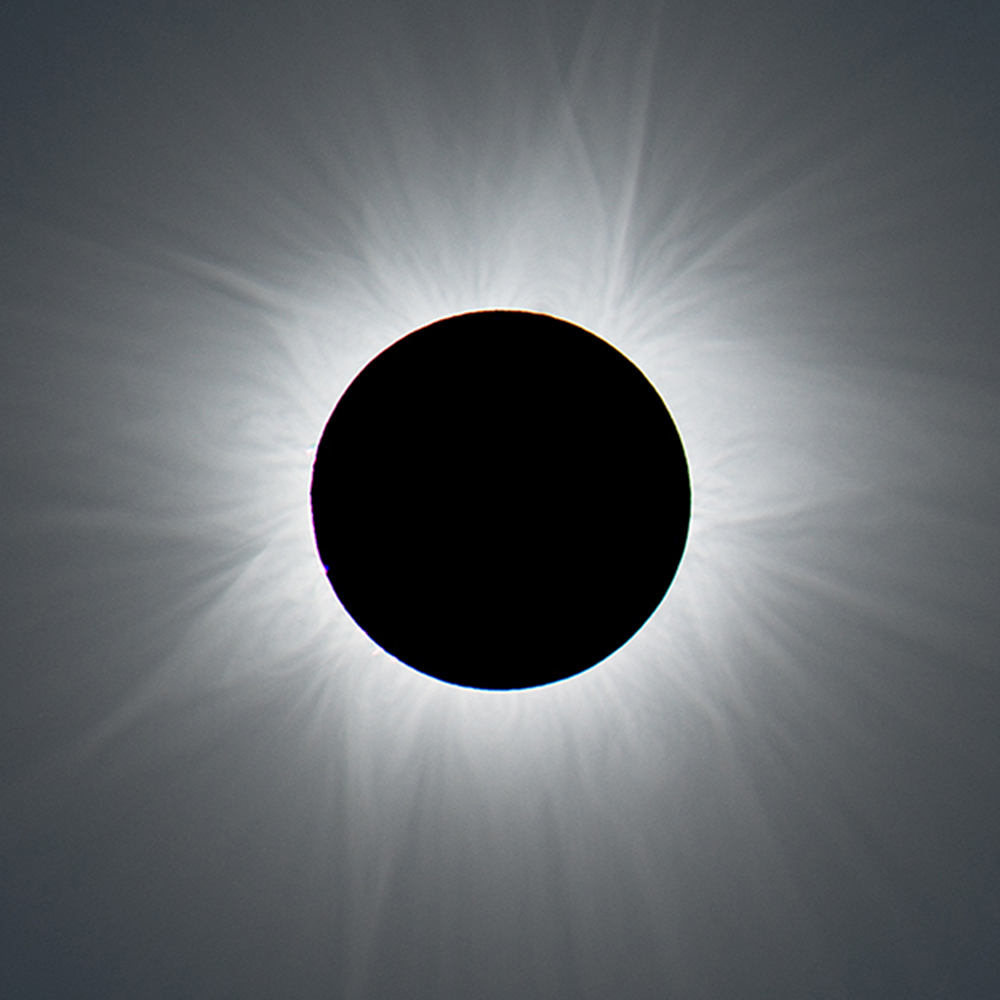
The corona refers to the sun’s two-million degree outer atmosphere visible during totality. Look closely to discern streamers that trace the sun’s magnetic field. Solar prominences erupting from the sun’s surface may appear as pink structures around the moon’s periphery. (Photo by Robert Slobins)
For further instruction, click here to read Wilking’s document prepared for his Astronomy 1050 class.
Have you witnessed a total solar eclipse before?
I have not. We did have an annular eclipse on the UMSL campus in May 1994 that was impressive, but there was always a ring of sunlight surrounding the moon, so you could only look at the sun with eclipse glasses.
Speaking of glasses, what are things to know about viewing the eclipse safely?
You can only view the eclipse from the UMSL campus using eclipse glasses since it will only be a partial eclipse. About 30 minutes south of campus, where the eclipse is total (up to 2.5 minutes), it is safe to look in the direction of the sun without safety glasses. You could view the partial eclipse with a telescope or binoculars provided they have solar filters blocking most of the incoming sunlight. You cannot look at the sun with eclipse glasses through an unfiltered telescope or pair of binoculars as it will melt your glasses.

